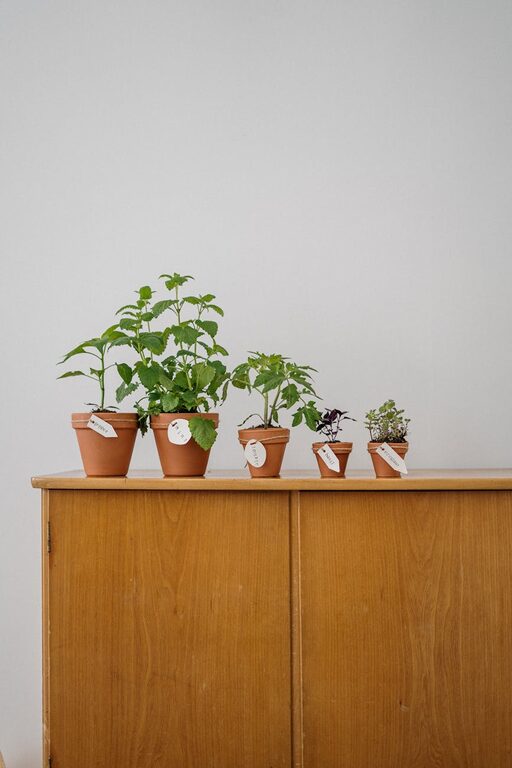
Starting a small herb garden indoors is a rewarding and practical way to bring fresh flavors into your kitchen, enhance your cooking, and enjoy the benefits of greenery all year long. Whether you have limited outdoor space or want easy access to herbs like basil, parsley, or mint, growing herbs indoors can be simple and enjoyable. This guide will walk you through everything you need to know to create a thriving indoor herb garden.
Why Grow Herbs Indoors?
Herbs are not only useful for cooking, but they also add fragrance and life to your living space. Growing them indoors means you don’t have to rely on store-bought herbs that may lose freshness quickly. Plus, indoor herb gardens are great for beginners and those with limited space.
Choosing the Right Herbs for Indoors
Some herbs are better suited for indoor growing than others. Here are some popular, easy-to-grow options:
– Basil: Needs lots of sunlight and warmth.
– Parsley: Tolerates moderate light and is very hardy.
– Mint: Grows quickly and can thrive in lower light.
– Chives: Require moderate sunlight and are easy to maintain.
– Thyme: Prefers bright light and well-drained soil.
– Cilantro: Grows best in cool temperatures and bright indirect light.
Choose herbs based on your kitchen’s light availability and your cooking preferences.
Materials Needed to Start Your Indoor Herb Garden
Before planting, gather the following:
– Containers or pots: Small to medium-sized pots with drainage holes.
– Potting mix: Use a lightweight, well-draining potting soil designed for indoor plants.
– Seeds or seedlings: You can start from seeds or buy young plants from a nursery.
– Watering can or spray bottle: To water your herbs gently.
– Light source: A sunny windowsill or grow lights if natural light is limited.
– Labels or markers: Optional, but helpful to keep track of your herbs.
Step-by-Step Guide to Planting Your Indoor Herb Garden
1. Select Containers
Pick pots with drainage holes to prevent waterlogging, which can lead to root rot. If you want to reuse containers, clean them thoroughly before planting.
2. Prepare the Potting Mix
Fill your containers with potting soil, leaving about half an inch from the top. Avoid using garden soil, as it may contain pests or be too dense for indoor plants.
3. Plant Seeds or Seedlings
– If planting seeds, follow the packet instructions for planting depth.
– For seedlings, gently transplant them into the soil, covering roots without burying stems.
Lightly water the soil after planting to settle it.
4. Find the Ideal Location
Most herbs need 6–8 hours of sunlight daily. A south or west-facing windowsill is often best. If natural light is insufficient, consider using LED grow lights to supplement.
5. Water Properly
Herbs prefer consistently moist but not soggy soil. Water when the top inch feels dry to the touch. Overwatering is a common mistake, so always check the soil before watering.
6. Maintain Your Herb Garden
– Fertilize: Use a diluted liquid fertilizer once a month.
– Prune: Regularly trim herbs to encourage bushier growth and prevent flowering.
– Rotate pots: Turn plants weekly to ensure even light exposure.
Tips for Successful Indoor Herb Gardening
– Humidity: Indoor air can be dry. Mist leaves occasionally or place a tray of water nearby to increase humidity.
– Air circulation: Good airflow helps prevent mold and pests.
– Pest control: Check plants regularly for aphids or spider mites and clean leaves if necessary.
– Harvesting: Pick leaves in the morning for best flavor. Avoid taking more than one-third of the plant at a time.
Common Challenges and How to Overcome Them
– Yellowing leaves: May indicate overwatering or poor drainage.
– Leggy growth: Usually caused by insufficient light. Move plants to a brighter spot or introduce grow lights.
– Slow growth: Could be due to low nutrients; fertilize appropriately.
– Pests: Use natural remedies like neem oil or soapy water spray.
Creative Ideas for Indoor Herb Gardens
– Window boxes: Install a small shelf or box to hold multiple pots.
– Vertical gardens: Use wall-mounted planters or hanging pots to save space.
– Kitchen countertop garden: Keep herbs close for easy harvest while cooking.
– Recycled containers: Use jars, tea cups, or tins as unique pots.
Final Thoughts
Starting a small herb garden indoors is a fun, low-maintenance way to enhance your home and your meals. With a little care and attention, you can enjoy fresh herbs year-round, regardless of your outdoor space. Happy gardening!
—
With these simple steps, you’re ready to begin your indoor herb garden journey. Enjoy the process and the fresh flavors it brings to your kitchen!
